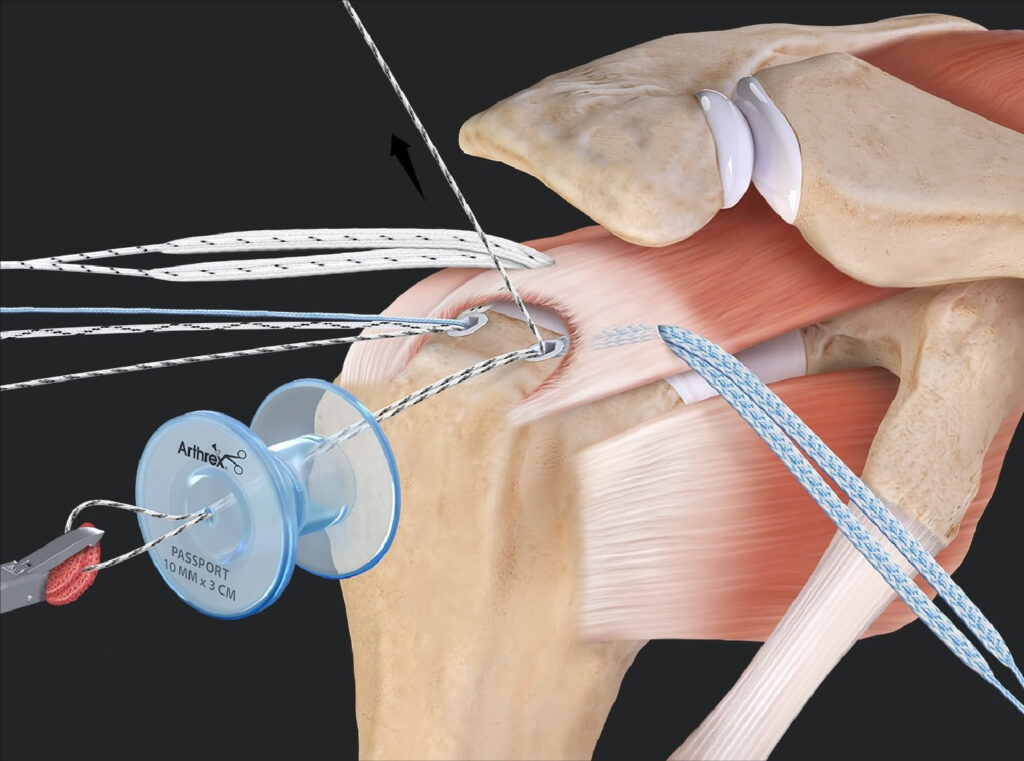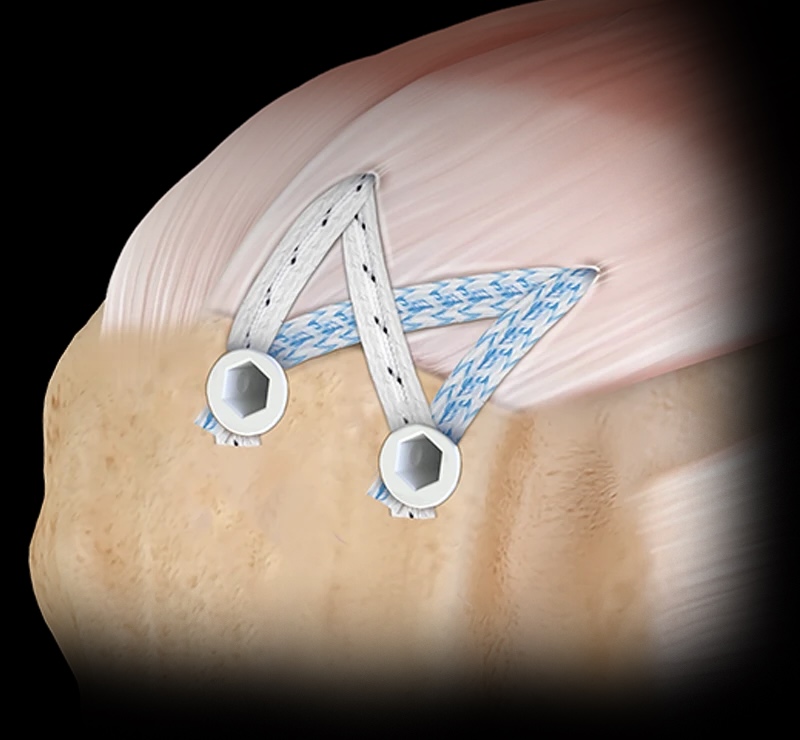Rotator cuff repair surgery is typically recommended for individuals with a significant tear in the rotator cuff tendon that causes pain, weakness, or limited mobility. When persistent symptoms have not improved with non-surgical treatments such as physical therapy or injections, or active lifestyles or work requirements demand shoulder strength and stability, surgery may be recommended. Read more about rotator cuff tears below:
What the surgery involves
The procedure can be performed using one of two predominant methods, both of which require sutures or anchors to secure the tendon to the bone, restoring the connection needed for proper shoulder function. The decision between the two depends on the damage present, but keyhole surgery is possible in the majority of cases. In some cases, additional procedures, like cleaning inflamed tissue or addressing other joint issues, may also be performed:
- Arthroscopic surgery: A minimally invasive technique where small incisions are made to insert a camera and surgical instruments.
- Open or Mini-Open Surgery: A larger incision is made to access the tendon directly.

What to expect after surgery
Post-operative recovery involves managing pain, protecting the repair, and gradually restoring strength and mobility. Here’s what you can expect:
- Your arm will be in a sling immediately after surgery to protect the repaired tendon
- Pain management includes prescribed medication and sometimes ice packs
- Physical therapy begins with gentle, passive movements to prevent stiffness, progressing to strengthening exercises as healing advances
- Avoid lifting your arm or heavy objects during the initial recovery phase
Read Dr Lambers’ full post-operative rehabilitiation protocol here:
How long will you need to be in hospital?
Most patients stay in the hospital for one night after surgery however same day surgery is possible. This allows healthcare staff to monitor your condition, manage pain, and ensure a safe discharge plan.
Usual recovery times
Full recovery, including optimal strength and mobility, can take up to six months or longer. Recovery timelines vary but typically follow this progression:
- 0–6 weeks: Use of a sling, with gentle passive movements guided by your physical therapist
- 6–12 weeks: Gradual introduction of active movements
- 3 months: Begin strengthening exercises, and some return to sport or labour-intensive activities may be possible
Potential risks
- Surgery may pose a slight risk of stroke, heart attack, pneumonia, or blood clots
- Nerve or blood vessel damage, potentially causing numbness or weakness
- Rare but deep infections can occur in the shoulder post-surgery
- Postoperative stiffness: Affects up to 20% of patients but typically resolves within 6-12 months
- Some patients may not regain full strength or mobility
- Repaired tendons can tear again, especially in large or complex injuries or with increasing patient age
- Internal scarring may limit shoulder movement
- Pain may persist despite successful surgery
Deciding whether to proceed with rotator cuff surgery
We always recommend taking the time to weigh the potential benefits, risks, and recovery process of surgery. Dr Lambers will address any concerns and assist you in determining if surgery is right for you – there’s no need to rush this important decision.

